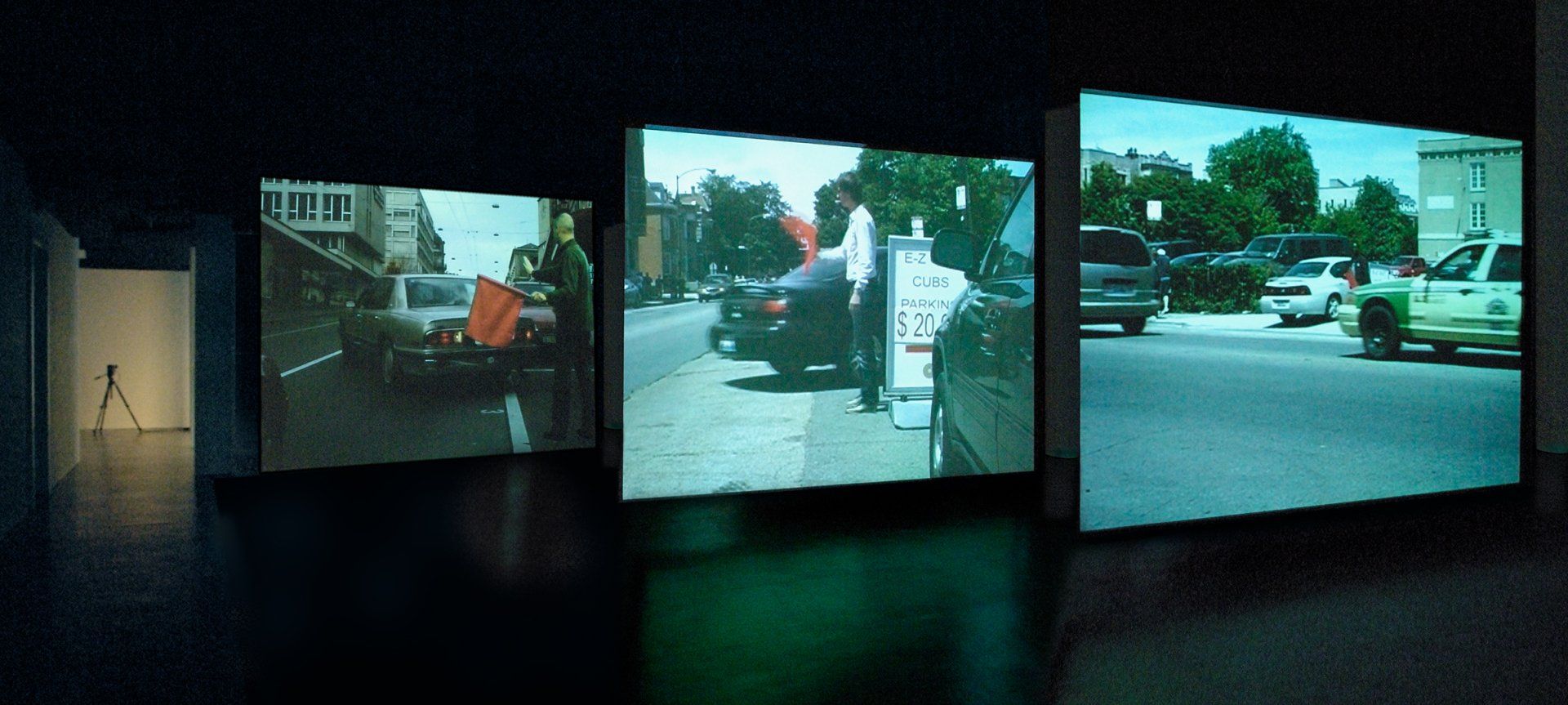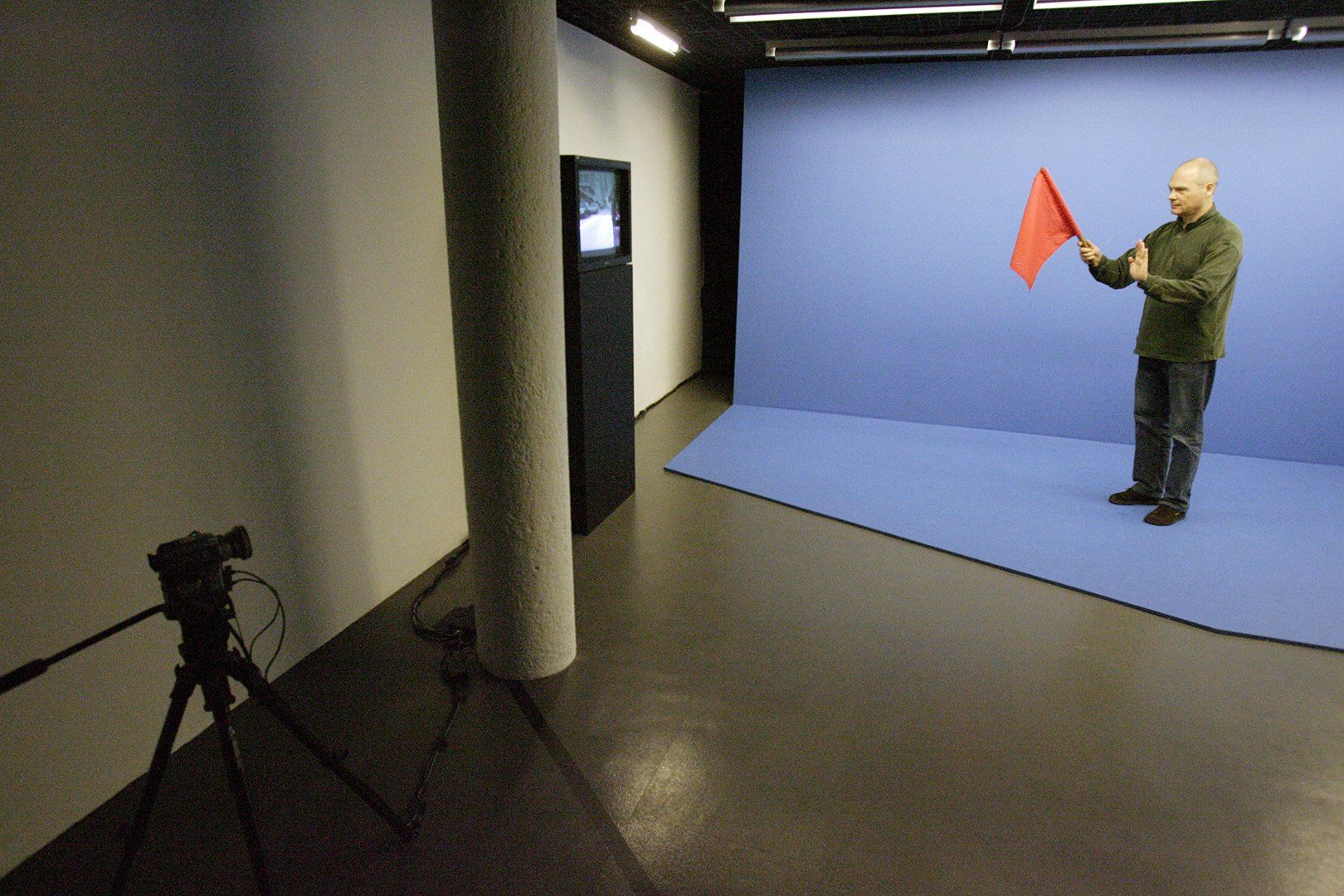Copy & Paste
2006, interactive video installation
Installation View: Centre pour l'image contemporaine, Geneva, CH. photo © Lucien Zürcher
The installation Copy and Paste by Sylvie Boisseau and Frank Westermeyer has a complex structure, revealing a comic dimension apt for jokes of repetition. Composed of three video projections, one almost in real time – delayed by only a minute – the installation offers an amusing and perhaps disenchanted reflection on the world of work. In making the gesture the focus of this piece, Boisseau and Westermeyer introduce political incisiveness into their ‚mis en scène‘ by soliciting the active participation of the viewers.
The three filmed sequences of Copy and Paste are almost perfectly identical. The images of the first two films were recorded at the turn of the millennium, in Chicago. The first, a long fixed shot, shows a black man, standing at the roadside at the entrance to an open air parking space. He is holding and waving a red flag in order to direct the passing cars to their parking spaces. Very quickly, his weary gestures, punctuated with excited jerks, prove to be useless; they are having no effect on the traffic and are totally ineffective.
If the work of world and its troop of small feeder jobs have some purpose, the vacuity of some of the repetitive gestures involved evokes a series of questions about conventions in the broader sense, but also on the age of reproducibility and one of its current declensions; that of “Copy and paste” (which could also be considered as part of the tradition of training and the transmission of manual knowledge)
Here, the concept of ‘copy and paste’ is introduced between the two projected films, between two repeats of the same scenario; with slight changes that cannot be measured with the ell of appropriation, but rather with that of delayed imitation. This shift precisely and amusingly highlights the uselessness of these gestures and plays with their potential significance.
In the second sequence, Frank Westermeyer takes the place of the parking attendant and reproduces his gestures in the same location. Is it the same activity, however? If the attendant brandishes his red flag in a mechanical manner, without conviction or commitment, indifferent to the potential significance of his body language, not just his ability to influence the traffic, but also to exploit the political, even subversive aspects, then Frank Westermeyer outstrips him with his gestures in order to bring out the potential to interpret them conversely, thus bringing to the fore the comic and ridiculous nature of the situation.
The film projected onto the third screen is done in two phases using the blue box technique: the action is filmed on a uniformly blue background, the action is then cut and projected onto a chosen background, in this case a street in Geneva, just outside the Centre pour l’image contemporaine. The exhibition visitors, if they play the game as suggested, are projected onto this backdrop while being filmed in the blue box shaking a red flag, following the example of the two men being reproduced on two other screens. The spectators thus record their participation and their gestures in the endless “copy/paste” chain, losing sight of the original and thus of its effectiveness and its political and social impact. –Isabelle Aeby-Papaloïzos

